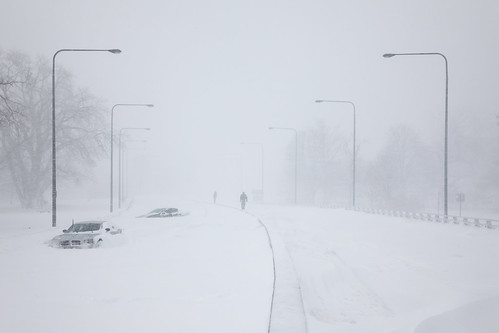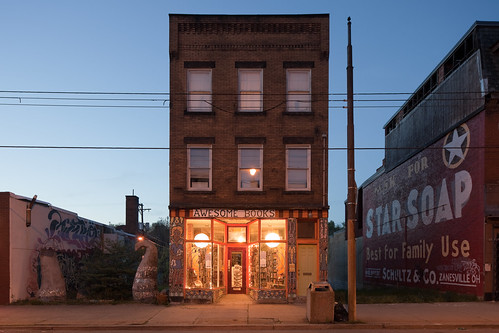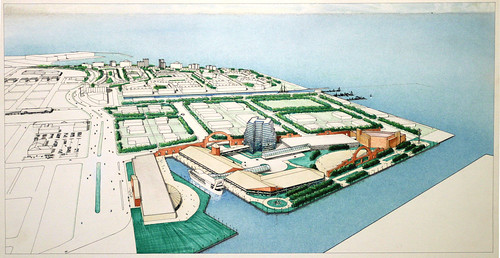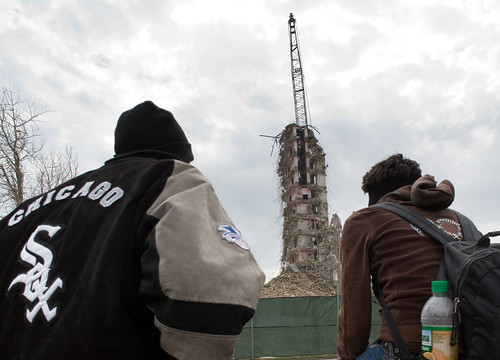Last year I compiled a list of representative photographs from many of the locations I visited in 2010. This year was similarly packed with travel, so I decided I should do it again, starting a year from when I made the last post. Nineteen U.S. metropolitan areas and Vancouver, Canada are represented, although there are a few other places I visited that I didn’t include.
A quick note about what you’ll see below: After I visit a place, I typically make a short blog post wherein I share a handful of favorite photographs from the visit. To make it easier to see those images, I’ve linked each city name to a post. Where there isn’t a post, I’ve linked the title to my full flickr set from the approximate place and labeled it with a “[f]”. You can click on any image to see a larger version of it on flickr.
Colonia residents fill their portable water tank from a new well on the Pajarito Mesa, southwest of Albuquerque. The 400 family community has no public utilities, including running water, electricity or direct access to school busing for children.
The left image was made on the first day of the Perlman Place demolition on April 16, 2010, the right on November 19, 2011. The simplified backstory is after years of neighborhood decline, a developer decided he wanted to turn this block into upmarket, renovated row houses; however, he didn’t have enough financing to make it work. The result was a stalled project, leaving the block in the state it was when pictured in the 2010. In response, the city initiated demolition. There are no immediate plans to replace the demolished units with new housing. The remaining residents are pleased that there are fewer derelict buildings to mask criminal activity, but they are terribly sad to have lost the block.
Cars remained stranded in the snowdrifts on Lake Shore Drive as the blizzard gusted on the morning of February 2.
A closed road on Cleveland’s East Side restricts vehicular traffic from one community to another.
This convenience store is one of a few retailers nestled between bail bondsmen and other lower rent businesses near the county’s criminal justice complex. Downtown Dallas rises in the background.
Dayton, Ohio [f]
A historic cemetery is crammed into a busy commercial strip in south suburban Dayton.
The locally-owned West Fort Appliance is illuminated by a neighboring building in the absence of functioning streetlights in this part of the city’s southwest side.
Late Thanksgiving night, shoppers waited to take take advantage of discount prices at a Best Buy in an Indianapolis suburb. I walked the length of the parking lot just before midnight, photographing the line’s accumulation in front of four other big box store locations. Two of the four were occupied.
Kansas City, Kansas and Kansas City, Missouri
Railroad tracks branch out into no fewer than 22 lines before converging into Kansas City, Missouri.
A man walks home from work through his apartment complex on the near east side of Las Vegas.
An oil pump churns through the night on the eastern edge of Lubbock, Texas. Here is a short audio recording of how it sounded.
This man moved to Milwaukee eight years ago after living in Chicago for most of his life. Tired of living in Milwaukee, he is planning on moving to Minneapolis sometime soon.
Two boys ride a bike by a shotgun house marked for demolition on a short residential street. The former Falstaff Brewery is visible on the right side of the frame.
One of many stores along the burgeoning Penn Avenue Arts District, Awesome Books sells a range of secondhand books.
Children play in one of the many mobile home parks located along I-5 between San Diego and the U.S.-Mexico border.
A painted billboard rests outside a derelict mall along I-25 between Santa Fe and Albuquerque.
Hanover Pancake House, which has served Topeka since 1969, is flanked by McDonald’s and a water tower during a February snowstorm.
Tushka High School students break down desks and other damaged materials following a tornado that destroyed much of the small Oklahoma town.
Vancouver, British Columbia, Canada
Vancouver’s Downtown Eastside is the location of a major redevelopment effort due to its high number of boarding houses and SROs, a few of which are seen here.
Washington, D.C. [f]
The Occupy D.C. demonstrations are located on two sites: Freedom Plaza and McPherson Square. The Freedom Plaza encampment (seen above) is adjacent to the District of Columbia’s government building and within sight of the U.S. Capitol Building.
















































































